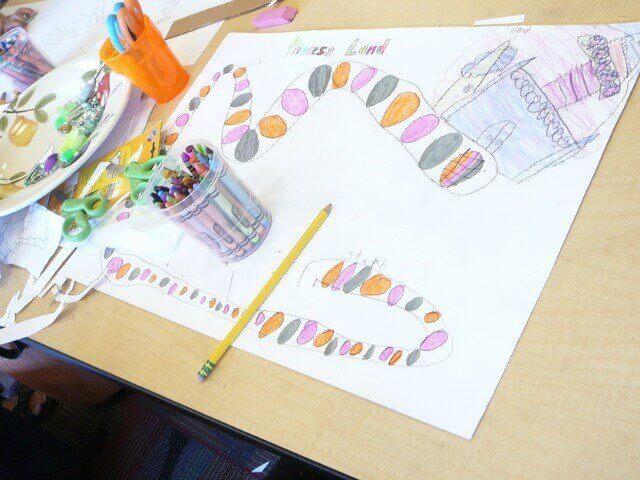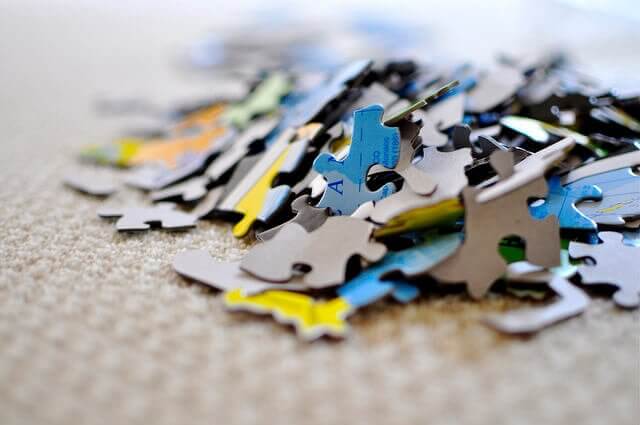By Beth Ricci, Contributing Writer
Kids are a lot smarter than toy manufacturers give them credit for these days.
Unfortunately, the gimmicky blinking and flashing cheap battery-operated plastic toys that provide cheap entertainment are becoming more and more the norm, as classic types of play are sadly undervalued.
In our mainstream culture, the purpose of toys is mostly to merely entertain. If it sings the alphabet, it’s an automatic bonus. Not much thought beyond that is given to the design and marketing of toys (aside from a toy’s profitability, of course.)
In our house we have a very strong preference for certain types of toys for our kids. We have a three kids, age five and under, and despite our best efforts to keep their play space carefully and intentionally curated, it still sometimes looks like a toy factory blew up in our playroom.
We believe that play is vitally important. It is, in fact, a child’s primary job.
They are tasked with learning and growing into capable and kind grown-ups – a daring feat to be sure. How do they accomplish this? Through their playful interaction with the world around them. They create and experiment and physically interact with their surroundings, and their naturally inquisitive and vivid imaginations thrive in doing so.
Charlotte Mason, a British 19th century educator (and a personal favorite of mine) said that “boys and girls must have time to invent episodes, carry on adventures, live heroic lives, lay sieges and carry forts, even if the fortress be an old armchair; and in these affairs the elders must neither meddle nor make.”
We do not want cheap plastic junk that merely entertains a child as they sit passively. In fact, most kids in our culture have far too many of these types of toys that are dumbing down their rich and natural creativity.
Instead, we encourage the type of play that allows for creativity to flourish, and personal development to take place within our children.
Here are 14 types of play that we encourage in our home in an attempt to intentionally curate our children’s activities:
image source
Art
This is one of my personal favorites. My 5-year-old has shown a fantastic initiative in art as of late, and I love to encourage it. I have quality art supplies on hand at all times, including paper, crayons, colored pencils, cardboard boxes, tape and scissors, good quality coloring books and sheets.
Nature
Could there possibly be any greater or more universal child’s play thing than a stick and some mud? My children absolutely adore playing in anything along these lines, including dirt and mud, sticks and rocks, water in any way, bugs and other animals, flowers, grass, a pile of leaves, hay, etc. They love it, and I encourage it!
Dress Up
We have a dress up bin of assorted odds and ends that my children love to play with, but I also find them playing dress up with our every day items as well. We have a couple of wall pocket organizers near our side door that hold all of our mittens, toques, and scarves in these winter months.
Not a day goes by that I don’t see one or all of my kiddos using them in one of their imaginary adventures to various places. My youngest (19 months) spends most of the day naked except for his diaper, a toque, and his winter boots.
Grown-up Things
Every kid loves to play with grown up things. There is a special sort of allure that these things hold over the little ones that look up to us. You name it, my kids have probably tried exploring and playing with it.
Of course, we don’t let them play with steak knives or power tools… but we do make a conscious effort to not let “stop touching that, it’s not a toy” be the automatic response every time they step out of the playroom.
image source
Games with Rules
Upon first consideration, this may seem counter-intuitive. We want to encourage creativity, right? Actually, I think that teaching children about the fine intricacies of boundaries and rules can help encourage things like creative cooperation and compromising strategies.
How can they learn to think outside the box if they’ve not fully understood its limitations first? Games that kids play which depend on a set of rules (tag, hide & seek, board games, etc.) are all gateways to kids being able to think creatively. There’s more than one way to skin a cat, as they say, which is exactly what I wish my children to discover.
Building
Sometimes I can almost see the smoke coming out of his ears as my 5-year-old plays lego. His brain is whirring a mile a minute as he creates and builds complex structures and vehicles that seem far too advanced for his age. He sees the possibilities in an almost-tangible way as he sits, completely immersed in his work.
We are planning to move into a more structured Charlotte Mason style of homeschooling this fall as he turns six, but for now I’m more than happy to let him play lego for hours each day. As he gets older I also plan to introduce other building toys like Tinker Toys and K’nex.
Jobs & Skills
One of the most popular types of creative play among young children is that which imitates grown-up activities. Children are known universally to love things that are “just like mama or daddy.”
Toys such as play kitchens, tool benches, doctor kits, etc. are conducive to this purpose, however it must also be said that no special toys are necessary for this type of play. A salad spinner and a whisk, a cardboard box as a car, a desk with some paper to play school… let the kids take charge in this one – they’ll show you how.
Exploration
Nurturing a sense of wonder and adventure in the world is near to my heart and as such I often delight in toys that encourage such things. My oldest received a pair of Bushnell binoculars for Christmas this year. Real, grown-up binoculars that work. We got them on a great sale at Costco, so it’s not a huge deal if they break (he’s still just five, and he does play hard), but we have been loving watching him take extra care of them (unlike some of his other cheaper, junky toys).
Other ideas in this line of thinking include things like a magnifying glass, measuring tape, nature journal, walkie-talkies, or a GPS for geo-caching.
Reading
I hardly think this one requires explanation. The only qualifier I will make is that children deserve high-quality books that are not twaddle. Expose them to a plethora of great authors and illustrators, and watch them fall in love.
We are currently on a Roald Dahl kick. Every time I tried to stop reading, I was begged for “just one more chapter, pleeeeeaaaase!” Be still, my book-lover’s heart! For great book suggestions, check out the book lists at Ambleside Online, divided by age.
image source
Learning
Math manipulatives, puzzles, science kits, and more! A child’s natural tendency is to love learning, but for a variety of reasons that is often stamped out and extinguished throughout childhood.
Take advantage of those young years where learning and play are one and the same, and present them with a variety of tools for learning that they can use with enthusiasm and excitement.
Handicrafts
My son is a bit young for it just yet, but I am excited to see the Rainbow Loom’s wild popularity. Handicrafts have enjoyed a great resurgence in popularity in the last few years, and our kids love them too! T
here are lots of resources out there for teaching a child to do things like knit, sew, play an instrument, etc. This also crosses over into the art category as well with things like play dough and clay, and all sorts of other crafty activities. I used to love playing with plaster of paris as a child, spending hours just creating things with my hands.
Paper
A simple piece of paper is small but mighty with the power of the imagination. The possibilities are literally endless. Make paper dolls, shadow puppets, or works of art.
Create something three dimensional with tape and scissors in the mix. A piece of paper can do so many things and inspire so much creativity it would be impossible to even try. Always keep a supply of paper handy for a child’s imaginative purposes!
Open-Ended
This is perhaps the most often-used category in my house (maybe tied with legos). My kids embark on global adventures on a daily basis involving their playsilks, backpacks, perhaps a flashlight or stuffed animal, and the couch cushions.
They use things like dolls and puppets and lunchboxes and laundry baskets to create intricate scenarios and stories that occupy them for hours.
I’m not sure it gets much better than that, really. Who among us adults doesn’t feel even a tiny bit of nostalgic longing when witnessing the wonder and grandeur they’re able to conjure up with just their minds?
Physical Play
For the more kinesthetic, athletic child, physical activity can be a form of creative expression.
Many people find their creative minds engaged while running around playing sports, and several of the above categories are often inextricably linked to physical activity, also.
What types of play do your children love?
We love our sponsors:
Plan to Eat: Plan To Eat was born from our desire to eat real food — great food — prepared at home, together as a family. Plan to Eat is an online menu planner that uses your recipes, scheduled for the days you want them, automatically generating your grocery list, organized the way you like to shop. Eat well. Eat together. PlanToEat.com.
Check out our newest feature!
The ultimate guide of natural products to help support living a more sustainable, non-toxic and eco-friendly lifestyle!
The post 14 Types of Play to Stimulate a Child’s Creativity (Instead of Dumbing it Down) appeared first on Keeper of the Home.




